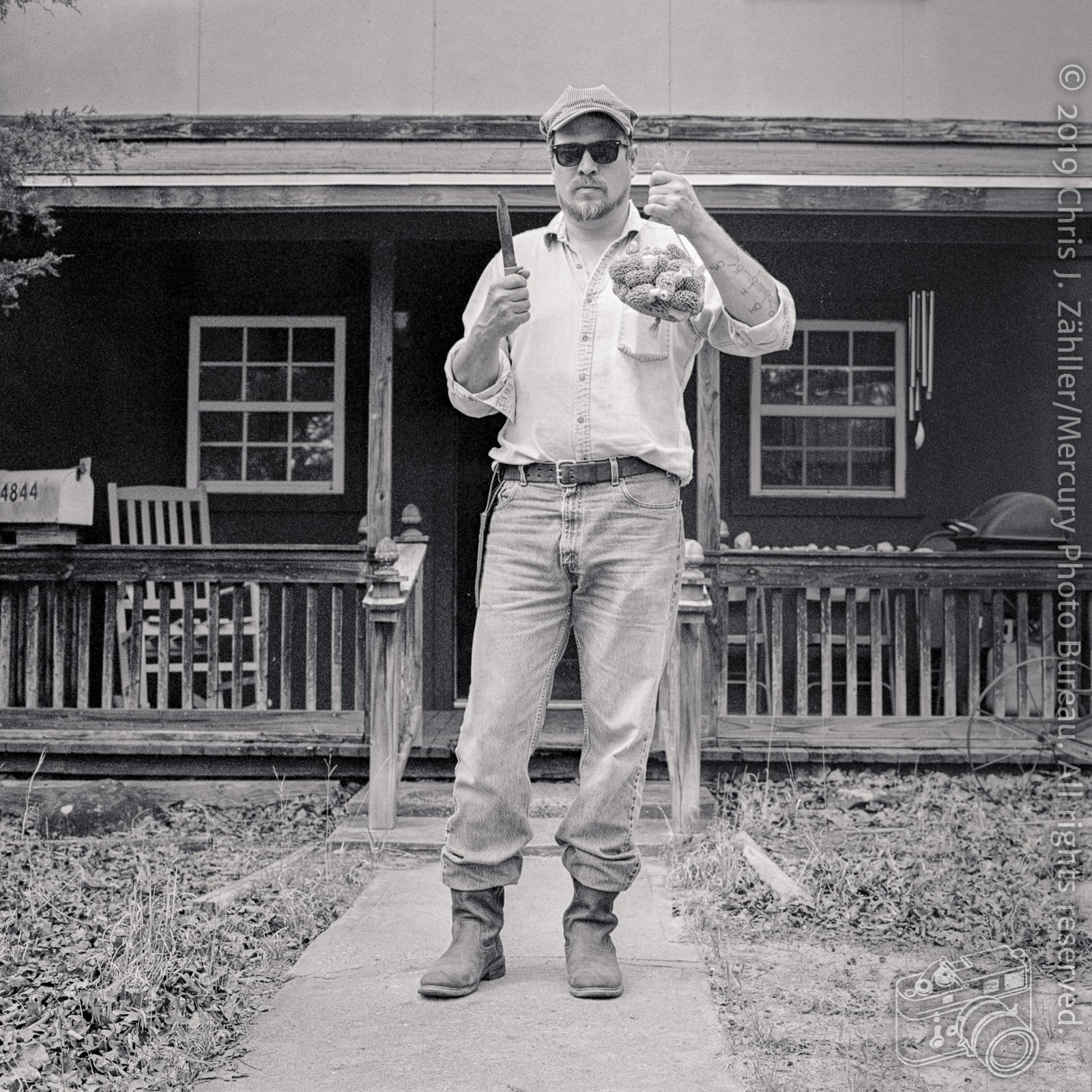
Be Vewwy Quiet — We’re Hunting Mushwooms!
Mushroom Hunting
Wet, Warm Spring Spawns Spectacular ’shrooms
My friend RT Valine and his wife Jackie were visiting the Bureau one evening and we got to discussing food and cooking. The Valines live in rural Allen, Oklahoma. When the conditions are right, they have access to wild morel mushrooms.
[Sidenote: Morchella esculenta, or yellow morels, are widely distributed, but especially common in eastern North America and the Midwest. They are the most common species found in Oklahoma. Despite the popular name, they can be pale brownish cream, yellow to tan or pale brown to grayish brown.] Morels are delicious, but hard to come by unless you know someone who knows someone. I sometimes see them at the farmers’ market, but the prices are dear and they disappear quickly — you’ve got to be first in line if you expect to buy any.
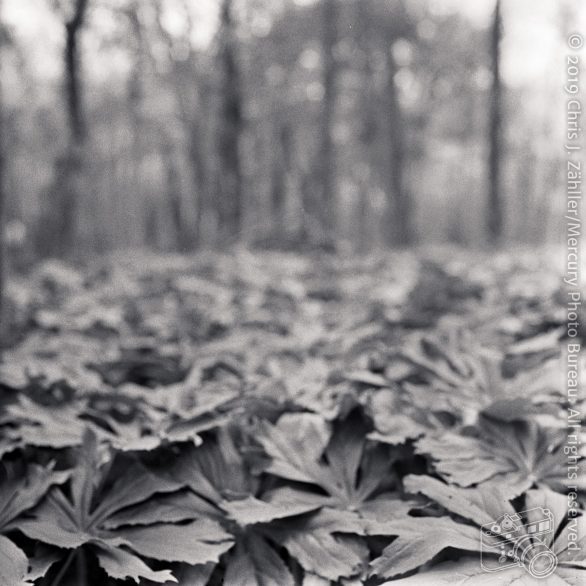
Being the generous people they are, the Valines invited me to stay in their comfortably appointed guest cabin to forage for the tasty fungi during morel season. I gladly accepted the offer.
[Sidenote: When choosing food to accompany morels, avoid strongly flavored ingredients. The delicate taste and aroma of the mushrooms is easily overwhelmed. Strong cheeses, raw or undercooked garlic, and highly aromatic spices are all no-nos. The simpler the better.] The day before I was to travel to Allen I picked up three small ribeye steaks to accompany the mushrooms we’d be eating for dinner. I also harvested some of the volunteer chives that have been growing in my yard since they escaped my neglected herb garden many seasons ago; these were to go on some scrambled eggs.
Into the Woods
[Sidenote: The same conditions that produce bountiful morels also apply to ticks. When foraging in the Oklahoma woods, wear high boots, long pants, and a long-sleeved top. Apply insect repellent generously. DEET for direct-to-skin application and permethrin for applying to clothing are the most effective tick-preventatives for people.] I met RT at the Allen Dollar General Store, where we left my MINI Cooper in the parking lot. We took his truck straight to the first honey hole: an active oil lease that RT had permission to forage on. Driving slowly on the dirt road into the lease, we watched out the windows to see if we could spot any morels. RT saw a couple from the driver’s side, but they were either immature or had begun to dry out. Eventually I saw a good one from the passenger side, so we parked and harvested it, then set out into the woods to see if we could find more.
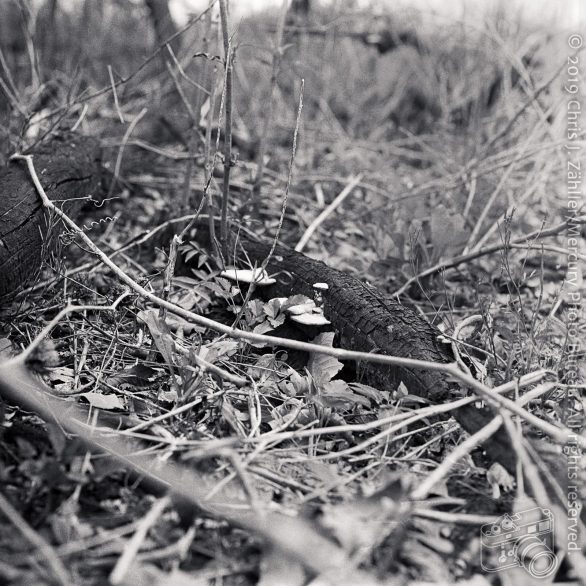
[Sidenote: For foraging mushrooms, I recommend a sharp carbon-steel knife and a mushroom brush. Some purpose-made mushroom knives have an integrated brush. The Opinel No. 8 and the Opinel mushroom knives are classics.] Over the next ninety minutes or so we harvested a bounty of morels, with RT spotting three for every one I found. We placed our haul in net onion bags on the theory it would help spread the spores. At a certain point we concluded we had enough and headed to his homestead, after a quick stop to get my MINI. Arriving at the guest cabin, I dropped off my Gladstone and went up to the main house. There, I took a load off and enjoyed a refreshing beer in the Valines’ living room.
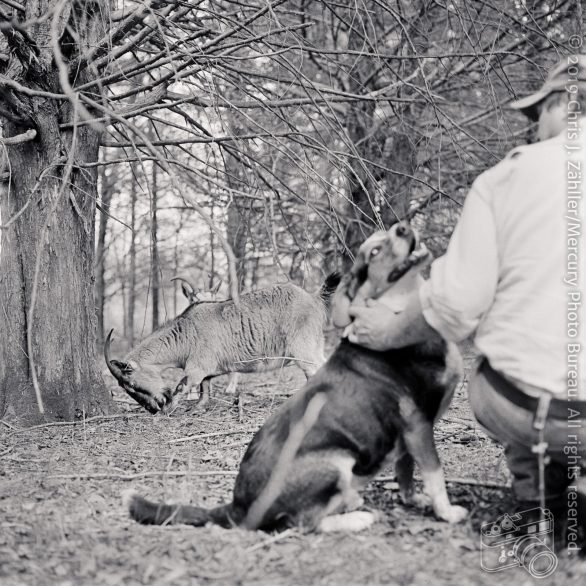
After we had cooled off and recuperated some of our expended energy we set out across the road. RT had had good luck hunting there the previous day and thought we might find more mushrooms. The dog, Wino, and the two goats, GG and L’il Kim, followed us and kept us company during the hunt. An hour in we’d found very few mushrooms and the older goat, GG, was getting tired. By this time my legs were aching and I was bleeding from the ubiquitous sawbriar, so I was glad for the excuse to turn back.
Good Food, Good Company
[Sidenote: 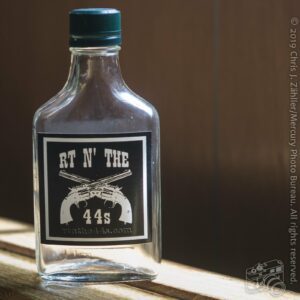 Moonshine — RT n’ the 44s] After sundown, RT pan-fried the steaks over the outdoor firepit while I prepped the scrambled eggs and Jackie cleaned the morels, seasoning half of them with salt, pepper, and garlic to accompany the steaks. While the ribeyes were resting I cooked the eggs low and slow à la Jamie Oliver.
Moonshine — RT n’ the 44s] After sundown, RT pan-fried the steaks over the outdoor firepit while I prepped the scrambled eggs and Jackie cleaned the morels, seasoning half of them with salt, pepper, and garlic to accompany the steaks. While the ribeyes were resting I cooked the eggs low and slow à la Jamie Oliver.
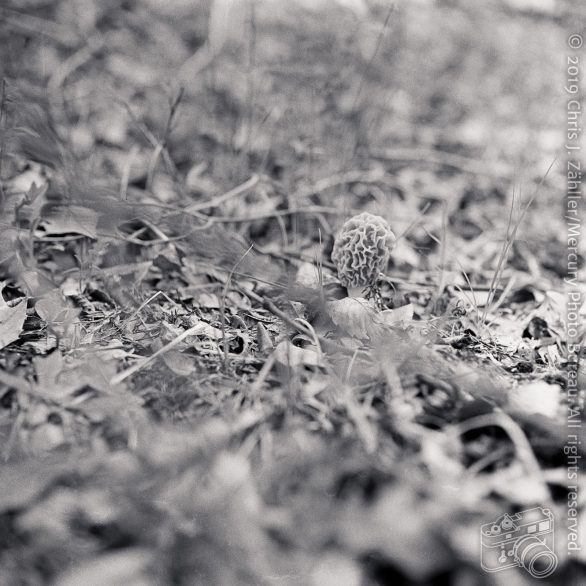
We sat around the firepit eating and drinking the cold beers. I’d brought along a bottle of moonshine RT had given me a few weeks earlier but which I hadn’t finished; we emptied it while the embers died down and the crickets sang.
Recipe
Scrambled Eggs (Recipe)
For each person:
- 3
- Farm fresh eggs
- 2 tsp
- Minced chives
- 2 oz
- Grated sharp cheese (e.g., cheddar)
- 1 oz
- Heavy (whipping) cream
- (To taste)
- Kosher salt & freshly ground black pepper
- 1½ TBSP
- Unsalted butter
- Melt butter in a well-seasoned cast-iron or non-stick pan over low heat.
- Combine all ingredients except butter in a bowl. Using a heat-proof silicone spatula, gently break the yolks and fold them in. Do not overmix.
- Pour the eggs into the middle of the pan. As the eggs begin to set, use the spatula to move the eggs from the pan edge to the center, occasionally turning the mixture over. Do not allow eggs to stick or dry out; keep them moving. The mixture should form large, soft curds. Remove the pan from the heat as needed to regulate the temperature.
- When the eggs are barely set — they should be shiny and slightly runny — transfer them to a warm plate. Taste for seasoning, adjusting if needed, and keep in a warm oven until ready to serve.
- Serve with morels (sliced cross-wise and sautéed in butter) and toast points.
Technical
Technical
The photographs in this story were taken with a Hasselblad medium-format film camera on Kodak Tri-X. For the image The Last Morel — Oklahoma Morel Foraging, 2019 I employed a Proxar f=1M close-focus lens attached to the Planar 50mm. The picture of the empty moonshine bottle was made with a Leica M9-P with Zeiss Sonnar 50MM lens.
- Camera
- Hasselblad 503CX with A12 back
- Lens
- Carl Zeiss Planar C T* 50mm ƒ/2,8
- + Carl Zeiss Proxar f=1M (The Last Morel only)
- Aperture
- ƒ/11
- Exposure
- 1⁄125th second
- ISO
- 400
- Film
- Kodak Tri-X 400 Professional 120
- Developer
- Adox Adonal (Rodinal) 1:100
- ~60 minutes semi-stand in Paterson Super System 4 daylight tank
- Scanner
- Epson Perfection v850
- Software
- Vuescan
- Adobe Lightroom 6
Warning
Warning
- Never pick and eat wild mushrooms unless they’ve been identified by an experienced forager or other expert.
- Look-alike mushrooms are deceptive. Mushroom identification in one locale is not reliable for identifying mushrooms in another locale.
- Cooking doesn’t make a poisonous mushroom safe. The cooking fumes from some poisonous mushrooms can kill you.
If you think someone has eaten a poisonous wild mushroom, call Poison Control immediately at 1 (800) 222-1222.